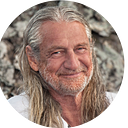There is nothing for you to attain
I maintain there is nothing for you to attain. Trying to attain something is the very mechanics of the mind that obliterates you noticing that you are a perfect arising of the power, intelligence, and beauty of life. Without this understanding, yoga practice is only part of the imposition on life, instead of participation in life.
The seat of Shakti is the heart, not the base. Asana is participation in the Union of all opposites and reveals the source of all opposites. The heart is the place of perfect giving and receiving of the whole body. Asana creates bandha, the intelligent cooperation of muscle groups in the intrinsic male female polarity of the whole body. The head acknowledges its heart source, while the strength of base and spine supports the heart and mind that arises from the heart. It is everyOne’s birthright to enjoy the heart’s flow, the perfect polarity of male female inside and out, in same sex and opposite sex intimacy, in all gender identification or none at all. This is the substance of Reality and Source of All… the pleasurable pastimes of Shiva Shakti in an ordinary life.
.
U. G. Krishnamurti (1918 — 2007)
“The greatest living Yogi I have ever met,” Krishnamacharya said. The fact that Krishnamacharya recognized U.G.’s realization of Yoga is profoundly significant. Krishnamacharya, who was deeply informed of humankind’s wisdom traditions from primordial to modern times, considered U.G. a living example of Yoga, of which there are very few. U.G. brought clarity to the heart of yoga:
- Yoga was the ancient language of pre-doctrinal times to describe unobstructed human life. Yoga is not something that you do, but something that happens to you. Yoga does you. You don’t do yoga. It is the power of the natural life that is you.
- • With the written word humanity invented teaching doctrines as instruments of power. With ideas of supreme states of realization, doctrine influenced and “exploited the gullible public.” These doctrines, however, were dissociated from their yogic origins. For example, Krishnamacharya described Christ and Buddha as Yogis, but centuries later these idealisms were taught as patriarchal imposition on people, without yoga,
Mark Whitwell
Heart of Yoga
